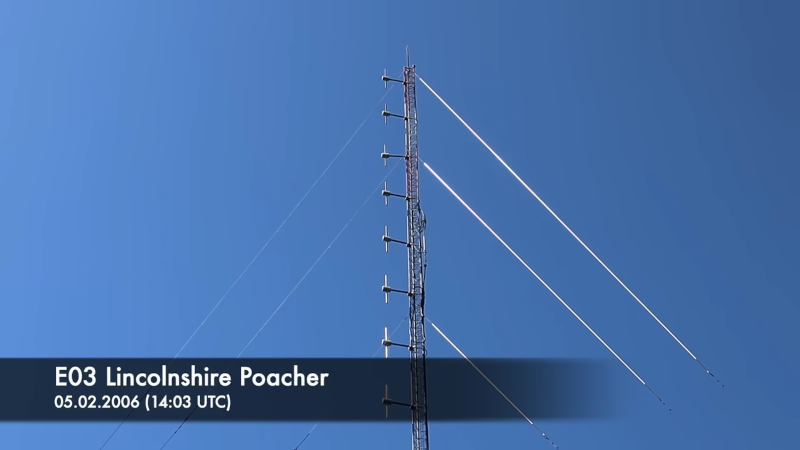[Ringway Manchester] has an interest in numbers stations. These mysterious stations send presumably coded numbers or other coded information. However, it is rare that anyone claims credit for these stations. Normally they operate with military-like precision, adhering to strict operating schedules and sending out their messages error-free. [Ringway] looks at five times when things didn’t go as planned for these spy stations.
Perhaps it isn’t surprising, however, as machines have likely replaced human operators. That makes them prone to errors when the computers go awry. Many of the errors are ones of frequency, where two number stations wind up transmitting at once. We suppose spies all use the same few frequencies. Some, however, also had computers go haywire and start going through the alphabet which, of course, could have been part of some secret message protocol, but appeared more likely to be a simple mistake.
We were amused, though, to hear the story of a Czech spy station that not only had a licensed call sign but would send QSL cards to people who reported reception. Perhaps they didn’t get the memo about secrecy!
We’ve listened to a few number stations in our time. If you don’t have a suitable antenna, you can always try hunting them online. But don’t expect to catch them making any mistakes.
















It´s amazon to be able to hear the store of a Czech station. Proofreading is still a badly lacking feature, for a website having such audience. Readers have to Supply Shame to lame editors, which is annoying. Is it too much asking for higher editorial standards ?
Somebody give this dude a gold medal.
Also, +1 000 000 000. Call it a feature all you want, it’s still a dang bug.
s/feature/attitude
s/too much asking/too much asking, enforcing
This comment is Muphrey’s Law at its finest.
Yo are saying some dubiouz tings aboot Murfi.
Muphrey was an otpimits?
Apparently, it gives some people a reason to comment…
I’m actually amazed no-one is making a voice to text system so we can run through hashcat and end this forever. maybe even some basic decryption items
Hashcat won’t work, it’s believed that number stations use some form of one time pad.
Or that they ARE the one-time pad.
“Warrenton Woman” was a counting station in Virginia reportedly operated by the CIA.The curious thing about the broadcasts is that there was always a background hissing noise. It was found that the noise was actually a Direct Sequence Spread Spectrum (DSSS) signal carrying heavily encrypted data in addition to the clear-text number groups. DSSS is the same modulation format as used on GPS signals. Unless you’ve got the right PRN (Pseudo Random Code) you’re unlikely to ever decode any of it.
Clever. So some spies get the tricked out iPhones and some get the printed one-time pads and have to tune in every night. The Hierarchy of Spies.
for those who do not know, RIngway Manchester is among other things a YouTube channel run by Lewis, he covers many aspects of Radio from PMR (walkie -talkies) to well, numbers stations. This was not clear in the introduction. (I have never met him!)
“Perhaps they didn’t get the memo about secrecy!”
While there seems to be a certain mystique to numbers stations, the purpose has never been to protect the sender from identification. For political reasons, governments won’t say anything about their stations, but since it’s a simple matter to pinpoint the location of a transmitter, especially one that’s transmitting continuously for 45 minutes at a time, and on a regular schedule at that, and because one can deduce from the location what country either operates or allows the operation of the station, it’s never been a serious mystery!
I don’t see the problem with sending QSL cards.
Also an excellent method of reception monitoring that costs nothing more to implement than some printing and postage. No risk to the organisation too, maybe some risk to the listeners in certain countries however.
I wonder what would happen if some one just started to transmit the output from a Random Number Generator?
As a ham, someone would come knocking on my door… Even my little 100w station is heard all over the earth. I have use a WSPR Beacon to test my antennas with just 1w and you would be surprised how far that goes. So if two or more stations can hear you, your location would be known very quickly! Also we US hams can’t use any encryption or obfuscation on the air.
The ‘secret message’ in most number-stations isn’t in the signals they send out, it’s the precise date and moment that the signal changes.
It could be a drop-out, increase in activity or a change in ‘programming’.
The gibberish/noise is there to authenticate the source of the signal.